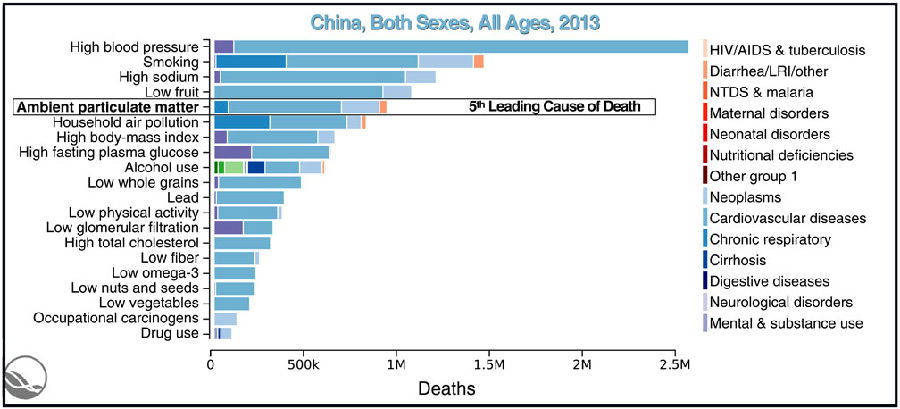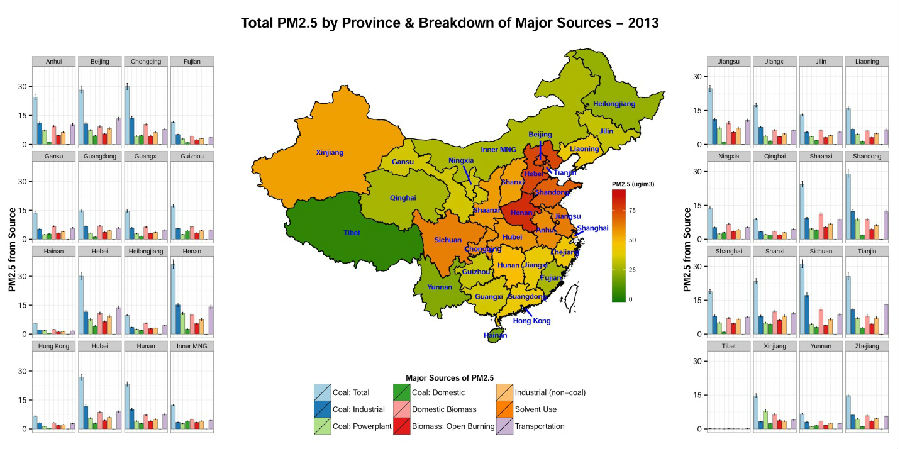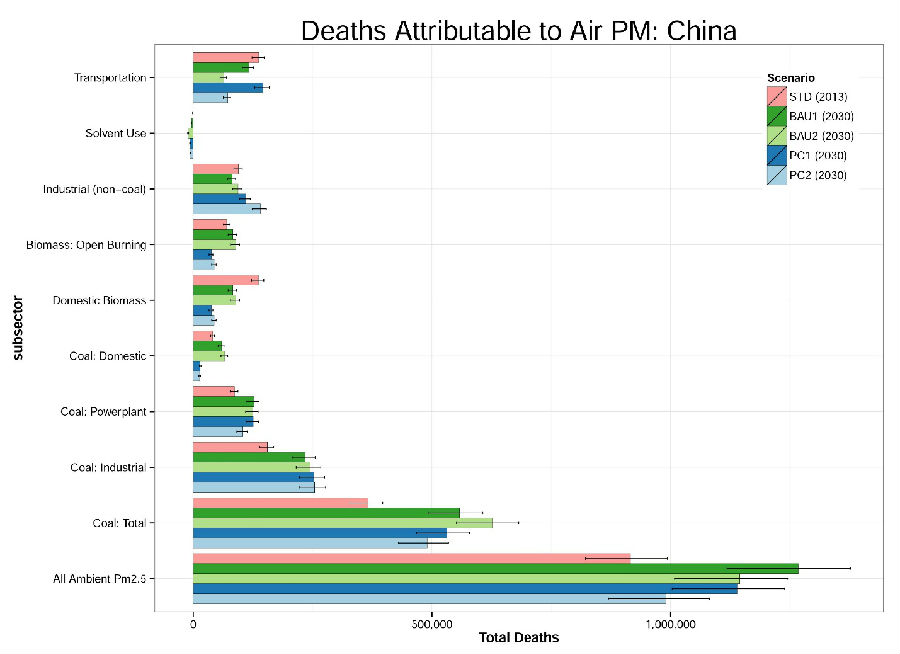SOE, Tsinghua August 19, 2016 A comprehensive study led by Tsinghua University and the Health Effects Institute (HEI) has found that coal combustion is the single largest source of air pollution-related health impact, contributing to 366,000 premature deaths in China in 2013. The study was released on August 18 in Beijing and is available in Chinese and English at: http://pubs.healtheffects.org/view.php?id=455.
China has implemented extensive pollution control programs for power plants, vehicles, and other sources, and required substantial reductions in all major cities. Looking ahead, the study, Burden of Disease Attributable to Coal-Burning and other Major Sources of Air Pollution in China, found that with continued actions to control air pollution, the health burden will decline substantially by 2030 and 275,000 premature deaths could be avoided. However, even with these reduced future pollution levels, as the Chinese population continues to grow and age, the health impacts from air pollution will increase, highlighting the challenges facing the country.
This new report, published after rigorous analysis and peer review, provides the first comprehensive assessment at national and provincial levels of current and future burdens of disease attributable to coal-burning and other major sources of particulate matter air pollution (PM2.5) in China.These are the results of Global Burden of Disease – Major Air Pollution Sources (GBD MAPS), an international collaboration of Tsinghua University, HEI, The Institute for Health Metrics and Evaluation (IHME), and the University of British Columbia.
Air Pollution: A Significant Source of Health Burden in China
The Global Burden of Disease (GBD) 2013 estimated that exposure to ambient fine particulate air pollution (PM2.5) contributed to 916,000 premature deaths in China in 2013. “The GBD is the largest and most comprehensive effort to date to measure epidemiological levels and trends worldwide (www.healthdata.org/gbd),” said Zhou Maigeng, Deputy Director of the National Center for Chronic and Non-communicable Disease Control and Prevention, Center for Disease Control of China and lead author of the GBD 2013 Chinese analysis published in the British medical journal The Lancet in October 2015 . “Based on Chinese data, we found that outdoor air pollution was the 5th leading cause of premature death in China in 2013.” (Figure 1)

Figure 1. Estimates of causes of premature death from 20 top risk factors in 2013 (GBD COMPARE http://ihmeuw.org/3tva )
Coal, Industry, and Household Combustion among Leading Sources
The study took advantage of enhanced satellite data and China’s growing network of air pollution monitors, and was the first to estimate the impact of different air pollution sources province-by-province throughout China. It found that coal combustion – from industrial, electricity, and domestic sources – was the largest contributor to PM2.5 population exposure across China (Figure 2).
“Coal-burning was the most important contributor to ambient PM2.5, causing an estimated 366,000 premature deaths in 2013,” according to Professor Wang Shuxiao of Tsinghua University, and a lead investigator for the study. In addition, she noted that “industrial sources and household solid fuel combustion, from both coal and non-coal emissions, were the largest sectoral contributors to disease burden attributable to ambient PM2.5 in China, responsible for 250,000 and 177,000 premature deaths, respectively.”

Figure 2. Breakdown of major sources of total PM2.5 by province in China
Future Impacts to 2030: Lower Air Pollution, But Continued High Health Burden
GBD MAPS also made estimates of future burdens in 2030, based on four future scenarios of air pollution control and energy efficiency, ranging from “Business as Usual” (representing full implementation of the Twelfth Five-Year Plan pollution control measures, BAU1) to a maximum feasible air pollution control and energy efficiency scenario (PC2). The study projected that under all four scenarios exposure to PM2.5 will decrease, and be cut in half with implementation of the most aggressive efforts (PC2). However, as the Chinese population grows and people live longer, the number of air pollution-related deaths from cardiovascular and lung diseases will rise as well. The GBD MAPS analysis predicted that deaths attributable to air pollution could rise to 1.3 million annual deaths in 2030 (Figure 3). “Air pollution health burdens will continue to be a challenge but the potential for future health benefits from further control is enormous” said Robert O’Keefe, Vice President of the Health Effects Institute.
China has initiated a number of measures to control pollution in recent years and these are starting to show benefits. “These analyses highlight the need for even more aggressive strategies to reduce emissions from coal combustion along with reductions in emissions from other sectors, and such strategies are to be implemented in the Thirteenth Five-Year Plan.” said Hao Jiming, Academician of Tsinghua University. “The GBD MAPS estimates suggest that further emissions reductions in the industrial and domestic sectors are needed to provide future public health benefits.”

Figure 3. Deaths attributable to PM2.5 from major air pollution sources in 2013 and in 2030 under four alternative scenarios.